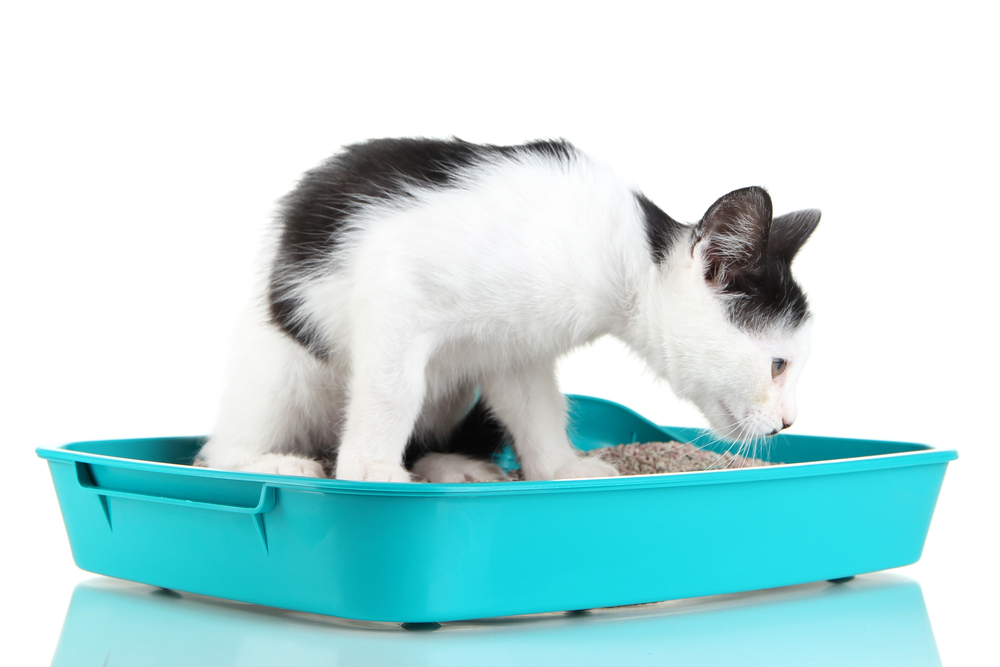A mantra for cat caretakers: You can’t scoop the litter box too often.
While there’s a litany of tips for successful litter box training, if the box isn’t scooped often, the prettiest setup is useless.
Cats have extremely sensitive noses, and while they find comfort in familiar scents, a box full of urine clumps and poop is guaranteed to be off-putting. Not only is it smelly, it translates into stepping among feline land mines.
Pulitzer was my problem child when it came to using the litter box. He had a mild case of cerebellar hypoplasia and was a bit of a doofus. As a result, his litter box habits were erratic, but with vigilance we managed the problem. He was my biggest lesson in the importance of maintaining a clean litter box.
One time when he was nosing around, I saw him sniff a fresh clump of pee. He shook his head and leaped away from the box. Yep, that stressed him out.
I also saw him “shop” among the boxes before finally choosing the “right” one. He trained me about the importance of frequently scooping the boxes. Since I had four cats at the time, it was the first thing I did in the morning and the last thing I did at night. And in between time when I saw that the boxes had been used.
These days with just two cats and four boxes, I am less vigilant, but when I walk by and catch a whiff, I know the odor is compounded for the cats.
Litter Box 101
Stress has been fingered as one of the biggest causes of urinary problems in cats. The best way to make your cat comfortable is to start with the human response.
Many litter box setups are configured for human convenience, often a covered box in the dark, scary basement. You know, out of sight, out of mind. Optimum placement should be in an accessible, yet traffic-free location with a clear view of entrance and exit to avoid the possibility of ambushes by dogs or other cats.
The choice of the box in relation to the cat is critical. A 17-pound Maine Coon should not have to squeeze into a kitten-size pan. A large, clear, under-the-bed type of storage box is often recommended for its roominess. Pulitzer peed vertically, so to avoid wall accidents, I placed the top of the litter box on its end against the wall and slid the box against it.
Although a covered litter box is more aesthetically pleasing, it’s another case of out of sight, out of mind. In addition to retaining odors, the contents are hidden, so you don’t have that “reminder.” And if the contents are hidden, how will you know if your kitty is urinating excessively (a sign of kidney problems or diabetes) or infrequently or in tiny clumps (sign of a possible urinary blockage).
A covered box also hides the kitty’s line of vision, which can exacerbate an ambushing problem.
While you’re scooping, don’t neglect the surrounding area. If you have a feline who digs to China every time he uses the box, there’s sure to be litter scattered around the box–a stressor for those sensitive paw pads. Add vacuuming or sweeping to your cleanup routine.
The newer clumping litters make it easier to maintain the litter box, and there’s less of a need to dump the contents and hose out the box each and every week–that’s a lot of litter that isn’t really soiled to add to landfills. However, plastic can retain odors, so if things get whiffy, it’s time for a deep cleaning.
Litter Box Reluctance
If you’ve followed all the advice above and your kitty is still stressed by the box, there are a few other things to check out.
A visit to the veterinarian will rule out (or diagnose) any physical problem. Do seek the help of a qualified cat behavior consultant or board-certified veterinary behaviorist before the behavior is ingrained and your floors and furniture are damaged.
Try another type of litter. A highly scented litter may be off-putting. A coarse texture may irritate the paws. In addition to clay litters, there are paper-, wood-, and grain-based litters, as well as Cat Attract, designed to draw the cat to the box, low dust litters, and litters that indicate changes in urinary pH. Offer a couple of the new ones cafeteria-style and let the kitty choose.
Add extra boxes around the house.
Consider pheromone sprays or plug-ins, Feliway being one of the best known.
Medication, in combination with a behavior modification program, can be prescribed by your veterinarian or a veterinary behaviorist.
In coping with litter box problems, the last thing you want to do is punish the cat. Indeed, you are both stressed out, but take the time to look at the cat’s surroundings and what changes can ameliorate the situation. And be sure to scoop. And scoop again.
This article was reviewed/edited by board-certified veterinary behaviorist Dr. Kenneth Martin and/or veterinary technician specialist in behavior Debbie Martin, LVT.








